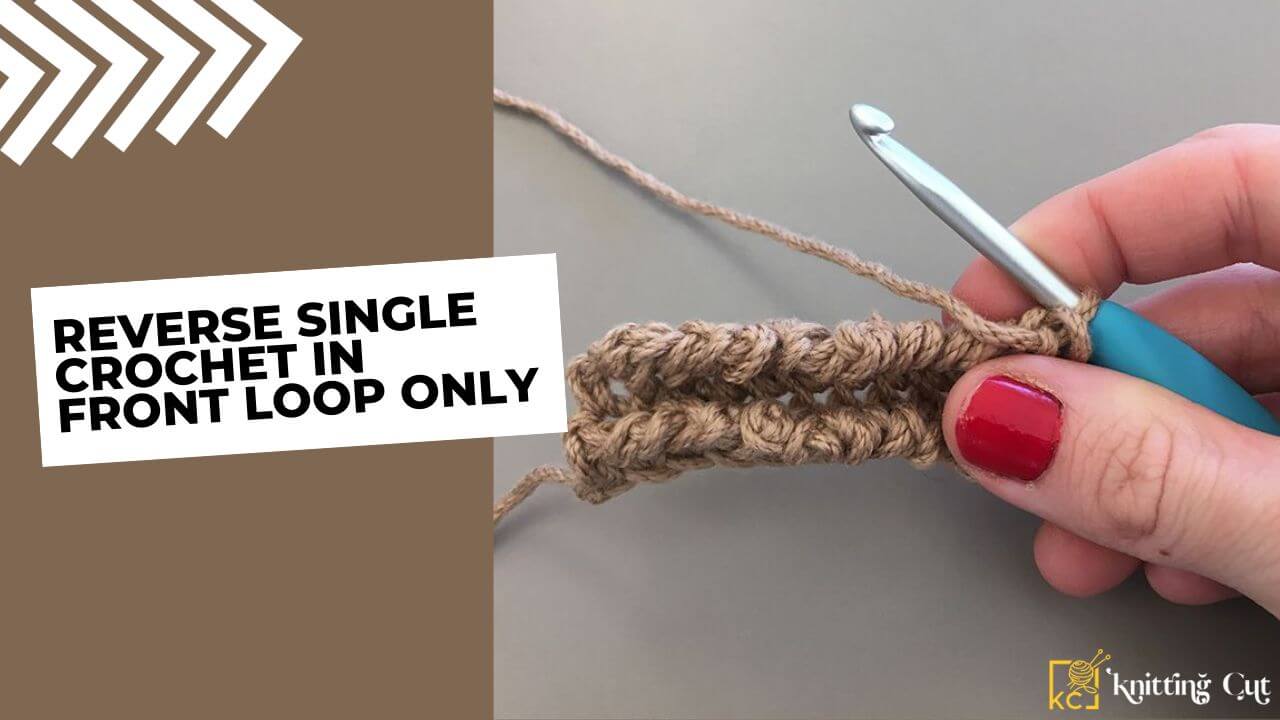A hybrid crocheting technique that combines Tunisian and standard crocheting with just one side being worked An attractive stitch, therefore, are you prepared to discover how to reverse only a front loop from a single crochet?
Let’s investigate! The reverse single crochet in the front loop only, which resembles twisted cable, works well as an edging. Even your knitted items might benefit from using it as an edging.
Another name for the reverse single crochet is the crab stitch. Utilizing it as a border, stitch this piece from left to right. Thus, you may create this reverse single crochet stitch by crocheting the single crochet from left to right.
How to Use the Reverse Single Crochet Stitch
The main usage of this reverse stitch is for edging on your project, like:
- Blankets
- Potholders
- Coasters
- Dishcloth
- Towel
- Bathmat
However, you can also use this stitch to make a whole project, like:
- Shawl
- Coaster
- Potholders
- Headband
Also Read: Crochet Style To Calm Up On
Reverse Single Crochet Stitch Requirements
Stitch level: intermediate to novice. Although the stitch is not very difficult, you must comprehend the technique.
- Tools: A crochet hook
- Material: 1 yarn skein or leftover yarn
Reverse Single Crochet Stitch: Stitches Used
The following stitches are required to crochet this stitch pattern:
Slip knot
Pull the loop tight by using the crochet hook to thread the yarn through it.
Chain (CH)
From back to front, wrap the yarn around the hook. Pull the yarn-covered hook through the loop on your hook.
Single Crochet (SC)
With just one loop on your hook, begin. In the chain stitch, slide the hook in. Pull the yarn through the chain stitch after wrapping it around the hook. There are now two loops on the hook. Draw the yarn through the hook’s two loops after wrapping it around the hook.
Directions For Making a Single Reverse Crochet Front Loop Only
- In the row below, slide the hook into the rear loop. Pull the yarn through the chain stitch after wrapping it around the hook.
- There are now two loops on the hook. Draw the yarn through both loops on the hook after wrapping it around it.
- Continue until the row is finished. Chain 1, Don’t flip your labor
- It may seem strange at first, but insert your hook through the initial single crochet’s front loop from the front to the rear.
- YO, and create a loop.
- There are now two loops on your hook; be sure the loop is not pulled through the hook’s loop.
- YO, and raise the loop on your hook through both loops.
- Continue in this manner for each and every crochet on the right side until the end.
- Chain 1, Don’t flip your work.
Is reverse single-crochet yarn heavy?
Indeed, when crocheting from left to right, this stitch requires more yarn than the standard crochet stitch. You need to use additional yarn, even using the same stitch, to achieve the twisted cord effect.
15 to 20 minutes; while this is just a reverse single crochet stitch, there are a few essential skills you must acquire. In the back of your work, you will crochet a standard single crochet stitch when working from right to left. You just crochet in the front loop as you work your way from left to right.
When you yarn over, you need to remember to leave two loops instead of pulling the loop through the stitch on your hook. After that, you flip the yarn over and pass the loop through both of your hook’s loops.
Conclusion
An effective edging is the reverse single crochet in the front loop only, which has a twisted cable-like appearance. The crab stitch, also known as the reverse single crochet front loop alone, works well as a pattern or as an edge for your crafts. It looks like a twisted cable. It has a lot of texture and thickness. So, the above requirements and instructions will help you make your own desired reverse single crochet stitch.
Also Read: How To Change Yarn Colors When Crocheting
